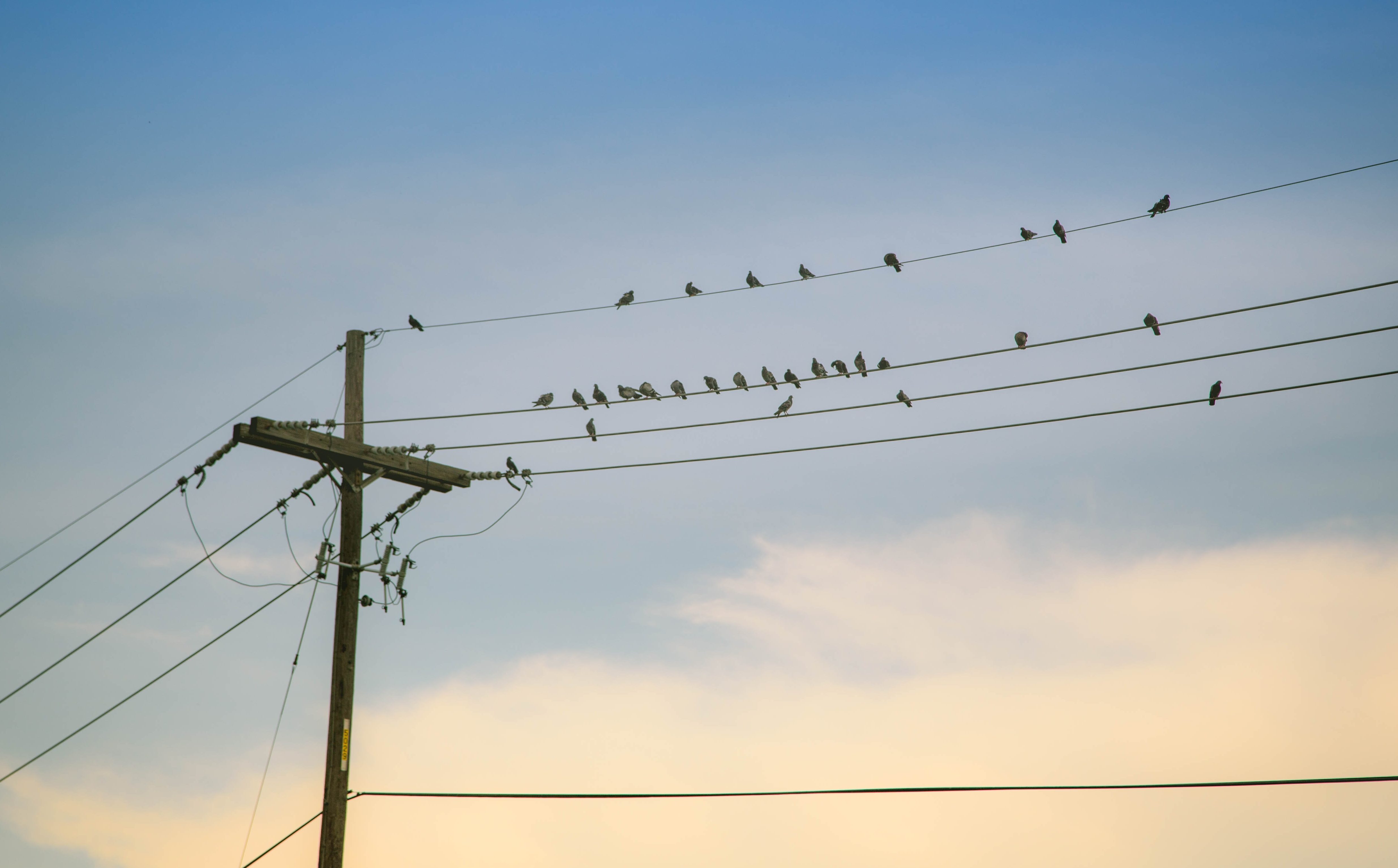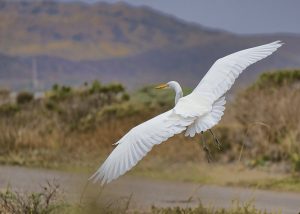
By PR-Tech (Portland, Or.)
Birds on power lines can be a picturesque sight to the uninitiated, but the truth is that power lines kill millions of birds each year. This not only threatens wildlife safety but can cause damage to the power grid itself, often resulting in outages and costly repairs. The good news is there are multiple bird deterrent tips to avoid these damages.
According to the U.S. Forest Service, an estimated 8 to 57 million birds are killed annually due to collision with electric utility lines. While hundreds of thousands more die from electrocution. (The lack of comprehensive monitoring leads to this broad range estimate.) These deaths can create damage to your equipment as well as your reputation in the form of outages and angry customers.
Birds on Power Lines: Sagging Lines and Compromised Integrity
Why do birds sit on power lines? For a variety of reasons: they perch there to rest, to sleep, get a layout of the land and keep out of reach from predators. To a bird, power lines are like a handy tree with very long branches.
Collisions
Unfortunately, birds don’t just safely sit on power lines; they also collide with them. Thin electric lines can blend into the horizon, are hard to see, and are often right at the average bird-flight level. This means that birds often can’t detect them before flying into them. And when flying in a flock it could be too unwieldy to change course at the last second.
Electrocution
Another danger posed by power line is electrocution. Birds typically don’t electrocute themselves by landing on a power line because they are not grounded to anything. However, larger birds often use poles and crossarms as hunting perches or for building nests. If they touch the wire with their claw or wing while standing on the crossarm, they ground themselves, leading to death. This also goes for small animals like squirrels and snakes.
As utility companies know, aside from wire damage, the presence of birds can create issues for the power grid itself. The problem is widespread: One estimate claims that birds are responsible for nearly one-quarter of all the outages in the United States. With many of them resulting from electrocution. Birds can also destroy utility wiring and insulation in an effort to secure nesting materials, diminishing the wires’ integrity. In addition, bird excrement can often cake on insulators or other electrical equipment. This can cause short circuits and can also make the pole unsafe for climbing creating additional problems for linemen.
Pole Damage
Wooden utility poles in areas that are home to woodpeckers can sustain frequent damage. These birds are not just loud and annoying but they can compromise the integrity of a utility pole. Another thing to consider is the sheer number of birds that can sit on one power line. This can compromise the line itself or the actual pole. The lean of the pole could create a number of problems for adjacent poles, down the line (no pun intended).
This reality underscores the importance of having a robust bird deterrent and protection program. Simply tools like reflective bird diverters can alert birds to the presence of the power lines. The problem exacerbates in areas that are naturally dark, have poor weather, and are far from populated areas. Special attention should be placed on power lines in these locales, including rural and forested areas.

Doing Your Part for Bird Protection
Utilities and other power line service companies should have an active bird deterrent strategy. This does far more than just providing wildlife protection; it can keep your infrastructure safe, protecting you from costly damages, outages, and potential insurance claims.
Protecting Endangered Birds
Bird protection is a priority for not just utilities but for other organizations as well, like the Avian Power Line Interaction Committee (APLIC). They work to “…serve as the focal point for avian interaction utility issues.” Beyond equipment protection, the APLIC wants to ensure the safety of migratory and endangered birds across America. The organization began with just 10 utility members, but it has now grown to include more than 70. They offer a wide variety of training courses and educational resources on bird deterrent and protection. Including its seminal, “Avian Protection Plan Guidelines,” released jointly with the U.S. Fish and Wildlife Service.
Using a Bird Deterrent to Increase Visibility
One of their first recommendations for modifying existing power lines is, “line marking to increase the visibility of the line.” They recommend suspended flap devices, explaining that the “swinging or flapping” motion of these markers makes them more visible and effective. In fact, the report cites one model, the FireFlyTM model from P&R Tech for its capability of reducing collisions by 60% to 95% on unmarked lines. While also noting decreased collision frequency on adjacent lines. P&R Tech has also developed self-powered lights designed to warn nocturnal birds and even bats of oncoming power lines.
Making the Skies Friendlier for Birds—and Those Who Depend on Power
Bird protection alone is the selling point that may resonate most with the general public. But utilities know that it’s equally, if not more, vital to prioritize power supply reliability. Birds and utility equipment are a bad mix that has lead to power outages and damaged wires. These costly repairs and outages affect entire communities and can put human life at risk.
Power lines must be properly marked to ensure wildlife preservation and power line integrity. Fortunately, there are affordable and effective solutions at hand. Bird diverters and overhead wire markers can keep the electrical grid—and wildlife—safe. P&R Tech offers a range of options, including models that flutter, are reflective, and glow in the dark for maximum visibility.
Check out this short video of some bird diverters in action:
–
Find out more about P&R Tech and its products here. The worldwide leader in power line markers. Its safety products have been tested by most major utilities, wildlife groups, and testing agencies to verify their effectiveness. They are even recommended by U.S. Fish and Wildlife and are the ideal solution to solve your bird protection challenges.
